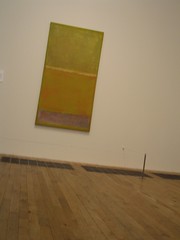I've been turning these thoughts around for a while... but some of it has become much clearer also since some of our attempts at figuring out a venue for the next exhibition are back in.
In short, we were looking for somewhere more established, a gallery/exhibition space where people go to look at (and buy art). Which kind of throws up all sorts of question of what we as group are trying to do. So, who are we??? Who do we want to be? Who do we not want to be???
I've been doing a lot of different group stuff for years: socially, politically and work-wise. E.g., a lot of my academic writing is co-authored. Often with different people too, and much of that I see as a 'why not try it out?' kind of endeavour: stuff could work really well, or alternatively it could be something where afterwards I would go out of my way never to repeat that experience. And, for the good things that come out of it once in a while, it seems all pretty worthwhile; in the process I forget about the growing list of 'things not to be repeated again'.
Thinking about it, my gut feeling of what stuff is likely to work and what isn't is really pretty good; so, some of the rubbish I end up with is often the stuff I for one reason or another can't get out of, and it rarely comes as a surprise...
So, when we went looking for gallery space, Tom and I had some discussions in the car of what we'd say who we were etc; making a pitch somewhere between art group, community stuff, evening class (no, not really), with some of our postcards and flyers. They were fun discussions. Of all our work, Tom and mine are probably furthest apart style/process-wise. His 1950s Bauhaus design training and my fairly anarchic muddle it all up, think about it, undo again approach make for some cool juxtapositions. Also, with almost two generations between us, there's a lot of difference in how we communicate and approach things. But to me that is part of the appeal of 'our' group.
Well, the result of our reckie was: you submit a proposal (yes, we thought that) and if they accept it, it's a three year waiting list. Bummer. Three years! We thought of maybe 18 months and could have probably coped with that. But three years?? I think individually, we could cope with that too. Fair enough: you do this now, do other things inbetween and then three years are up at some point - in fact, that's not so different to a lot of academic publishing - three years from submission to print is fairly usual for my (often rejected) articles, so: nothing new.
But as a group project for a group which exists rather loosely, that doesn't look feasible.
In fact, since the exhibition in June, the group dynamics have entirely changed. I knew and experienced how my own feelings towards Saturday mornings were thrown up all in the air; at points I was sure I would never go again because of the difficulties of getting stuff organised together. When I wrote a post with the title '
The things we do are the things that matter', it was part relief, part disbelief at all the panic thrown into a single morning to undo all the stuff one was working for (and I was pleased with my subtle titling). But strange things happened and neither Chris nor S-J are currently there. Probably not surprisingly, but the absence has had some profound effects on how Saturday mornings now unfold. Other people are becoming more and more visible.
So, last Saturday, E., Irene and I were sitting in the corridor, discussing E.'s most recent piece: it's the view out of the window and it's the first one E. does not do from photos. She works with a palette knife, patiently she builds up layer upon layer in oils, often earth coloured, with subtle changes in hue, temperament and mood. Every single one I've seen her doing over the past few years fascinated me: it's a very quiet, steady and calm way of working. So, her window view of Glasgow rooftops is very cool.
And there she sits and looks at my recent seascape mess (yet another attempt at marks on scrappy cartridge paper which makes the paper dissolve - yes - I DO know that the paper is too thin for what I'm trying to do, but I'll try nonetheless....) and marvels how dynamic it is, how she wished she would be able to do that. SNAP. Ditto: I loved to be able to work so calm and quietly. But I can't. But putting all these pieces together, they speak together. They are our Saturday mornings, the time spent over coffee, tea and biscuits, a waft of turps, too little space, too poor lighting, a bit of carrying stuff around, catching a quick glimpse at something out of the corner of one's eye and much more. That's how they belong together.
And on that basis, we'll be doing a bit more investigation at where to go... fairly soon, not in three years ;)
.jpg)
.jpg)































